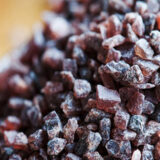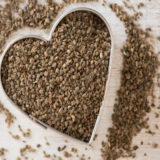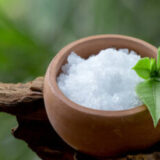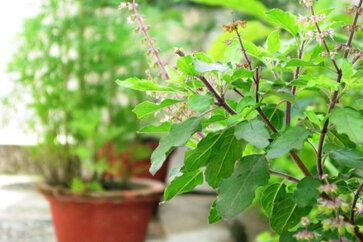Ayurveda – What Is A Dosha And What Are They?
 For those who want to learn and practice Ayurveda, it is important to know what a Doshas (Biotype) is and what they are. Understanding this concept is key to achieving a full understanding of the benefits and impact that this practice has on the health and quality of life of the people.
For those who want to learn and practice Ayurveda, it is important to know what a Doshas (Biotype) is and what they are. Understanding this concept is key to achieving a full understanding of the benefits and impact that this practice has on the health and quality of life of the people.
Man is a miniature of nature, nature is the macrocosm, and man is the microcosm.
The 5 essential elements of Panchamahabootas
- Earth: bones, cartilage, nails, hair. Pruthvi solid state.
- Water: all fluids, plasma, and secretions. Liquid state Aapa.
- Fire: skin color, temperature, digestion. Texas energy form.
- Air: nerve impulse and movements. Vayu gaseous state.
- Ether: cellular space and in the organs. Space or Ether Aakash.
Ayurveda is recognized since 2002 by the World Health Organization as a healthy lifestyle, Ayurveda offers personalized tools based on the identification of three models or Doshas (Biotypes) with specific characteristics that are related to each other.
What is a dosha in Ayurveda?
The word “dosha” means energy, our body is derived from the five natural elements—air, ether, water, fire, and earth. And the three Ayurvedic Doshas (Biotypes) are called Vata, Pitta, and Kapha and are the result of the interrelation of the five elements: earth, water, fire, air, and ether.
Doshas are also called main constitutions and are what define each organism within Ayurvedic practice. When the elements are out of balance, the result is a compromise of emotional and physical health. The objective of Ayurveda is to seek organic balance and for this, each individual must understand which of the three doshas governs them and which is in the background.
For the keen practitioner, Ayurveda online courses offer tools to more easily identify major and minor Doshas (Biotypes). Ideally, a person to know exactly his dominant Doshas should consult an Ayurvedic specialist to be able to determine through the analysis of his pulse, physical and psychological characteristics, and habits his individual constitution or Prakruti.
There are some online tests, for example, the Dr. Deepak Chopra test, or the maharishi Ayurveda test, as alternatives to know the differentiation of the three doshas.
The difference between Vata, Pitta, and Kapha?
The characteristics that identify Vata, Pitta, and Kapha are related to the interactivity of the elements. They are the forces that govern all biological, physiological, and psychological processes.
1. Vata (Air and Ether)
People with a more predominant Vata constitution tend to have a larger or smaller body build than average. Tall slim light build. Their weight is usually lower, with visible and small bones. Other differences are:
- Underdeveloped muscles and face are usually elongated.
- Dry or combination skin, cracked, with premature wrinkles. The cold temperature in hands and feet.
- Dry, not very abundant, rough, curly hair. Brittle nails
- Round, sunken, dry, restless, dull eyes. Small, narrow, or hooked nose.
- Hoarse, dysphonic voice, speaking fast and run over.
- Tendency to constipation and fast eating.
- Hyperactive and restless personality. Little sleep and frequent mood swings.
- With great enthusiasm, curiosity, and creativity.
- Very sociable.
2. Pitta (Fire and Water)
People with the Pitta Doshas (Biotype) are usually of moderate weight, with a medium-sized body structure, as well as their muscles and bones. They lose and gain weight with ease.
- Medium nose and mouth. Heart-shaped face, with a protruding chin.
- Increased prominence of freckles, moles, or acne.
- Hot body. Thin, straight hair with a tendency to gray hair and early baldness.
- Light-sensitive, light-toned, bright eyes.
- The high and sharp tone of voice. It is expressed directly and clearly.
- Tendency to regular, soft, and foul-smelling stools.
- Good appetite and intense thirst. He usually suffers from hyperacidity, inflammation, and gastritis.
- Detail-oriented, perfectionist, develops logical and precise thinking.
- Tendency to irritability, impatience, and being selective with friends.
3. Kapha (Water and Earth)
The person with the Kapha Doshas usually shows a large, stocky structure of muscles, bones, and weight, with a tendency to obesity. Its musculature is developed and is more solid than the previous Doshas.
- Wide, round, or square face. Wide, straight nose.
- Fresh skin with a thick, smooth, and moist texture.
- Thick and abundant hair, with waves. Eyes and a big mouth.
- Resistant nails. Chunky joints.
- The tone of soft voice, speaking slowly, melodious and slow, with dedication.
- Tendency to abundant, solid, and mucus stools.
- Eat slowly and digestion takes time.
- The low energy level and tendency to be sedentary.
- Good long-term memory, loyal and helpful.
Ayurveda is a holistic health system that recommends each human Dosha follow certain dietary guidelines and lifestyles to achieve a greater balance in their functions. However, the three basic recommendations applicable to the three Doshas are:
- Ayurveda Doshas Respect sleeping habits.
- Wake up, go to bed, and eat at the same time every day.
- Walk and exercise regularly, preferably, in contact with nature, with disciplines such as yoga and tai chi.
- Establish affirmations and positive mental behaviors
Note: Ayurveda, also known as ayurvedic medicine, is a system of living a healthy lifestyle, that people in India have used for more than 5,000 years.
The overall aim of Ayurveda is to emphasize good health through the prevention and treatment of illness through lifestyle practices (such as Yoga, Meditation, Massage, and dietary changes) and the use of herbal remedies.























